Accessoires in zomermood
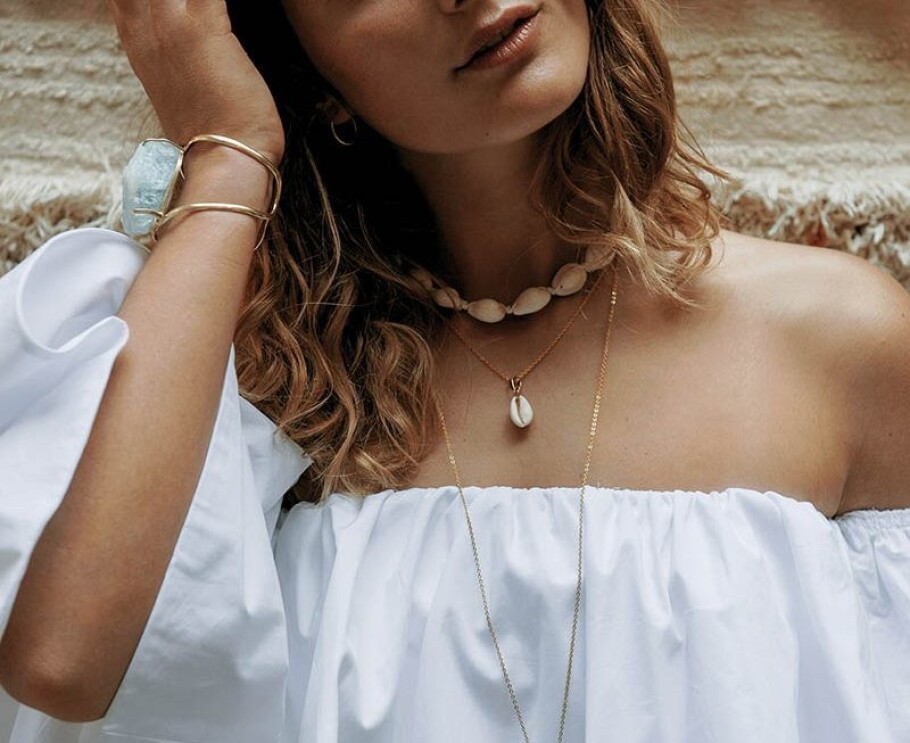
1.
Lentepracht vanaf 23 maart
Keukenhof
Lisse
Keukenhof verwelkomt je dit jaar vanaf 23 maart tot 14 mei 2023! jaarlijks meer dan 800,000 bezoekers, ook al is het maar acht weken per jaar geopend. De prachtige tuinen trekken veel publiek met hun spectaculaire bloemenpracht en overvloedige aanvoer van heldere en mooie tulpen.
Skip the Line tickets bestellen kan via onze partner Tiquets www.tiquets.be 3% EXTRA korting via FamilyCard

2.
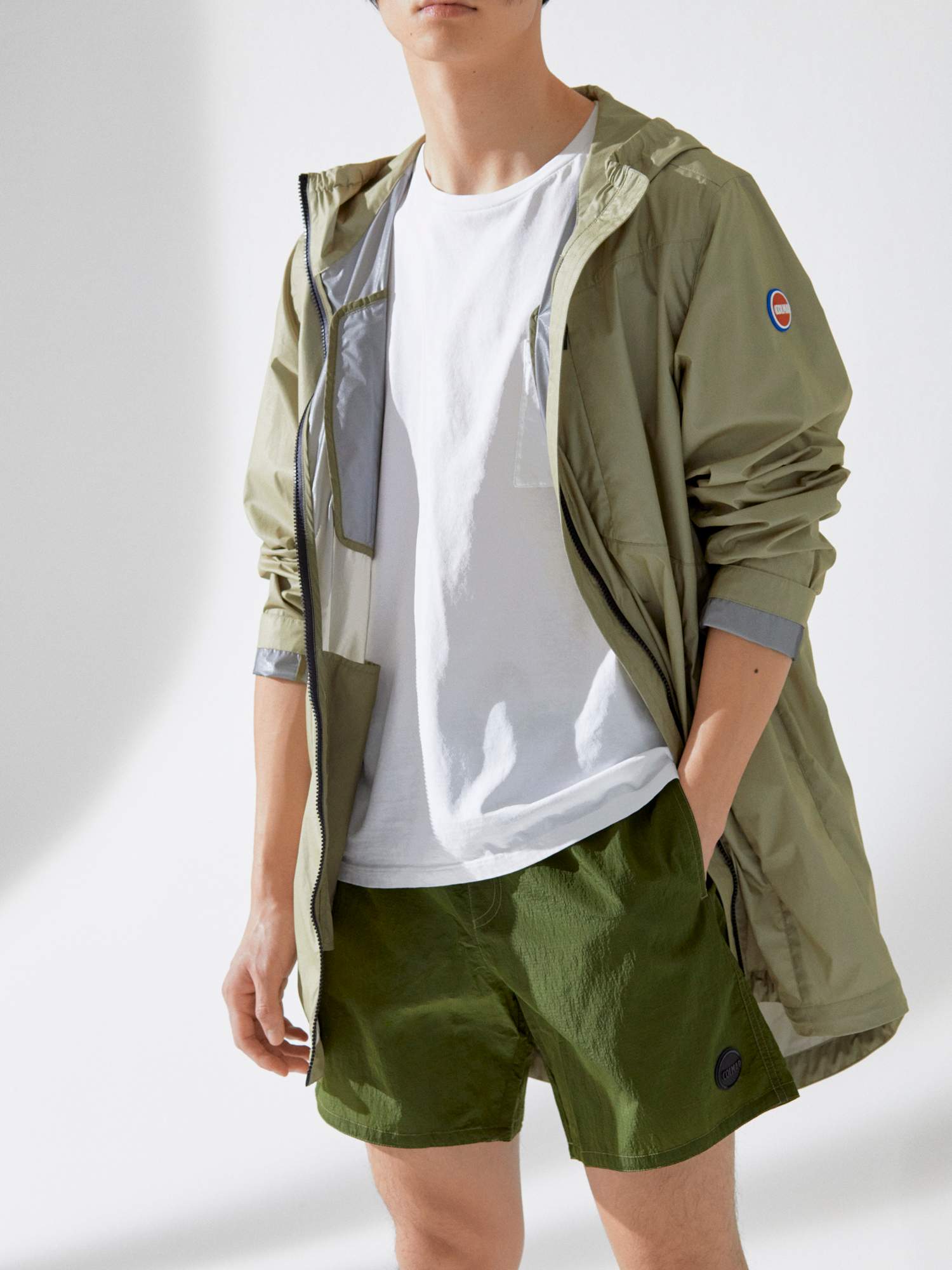
COAT and SWIM SHORTS by Colmar, t-shirtby Barena Venezia
3.
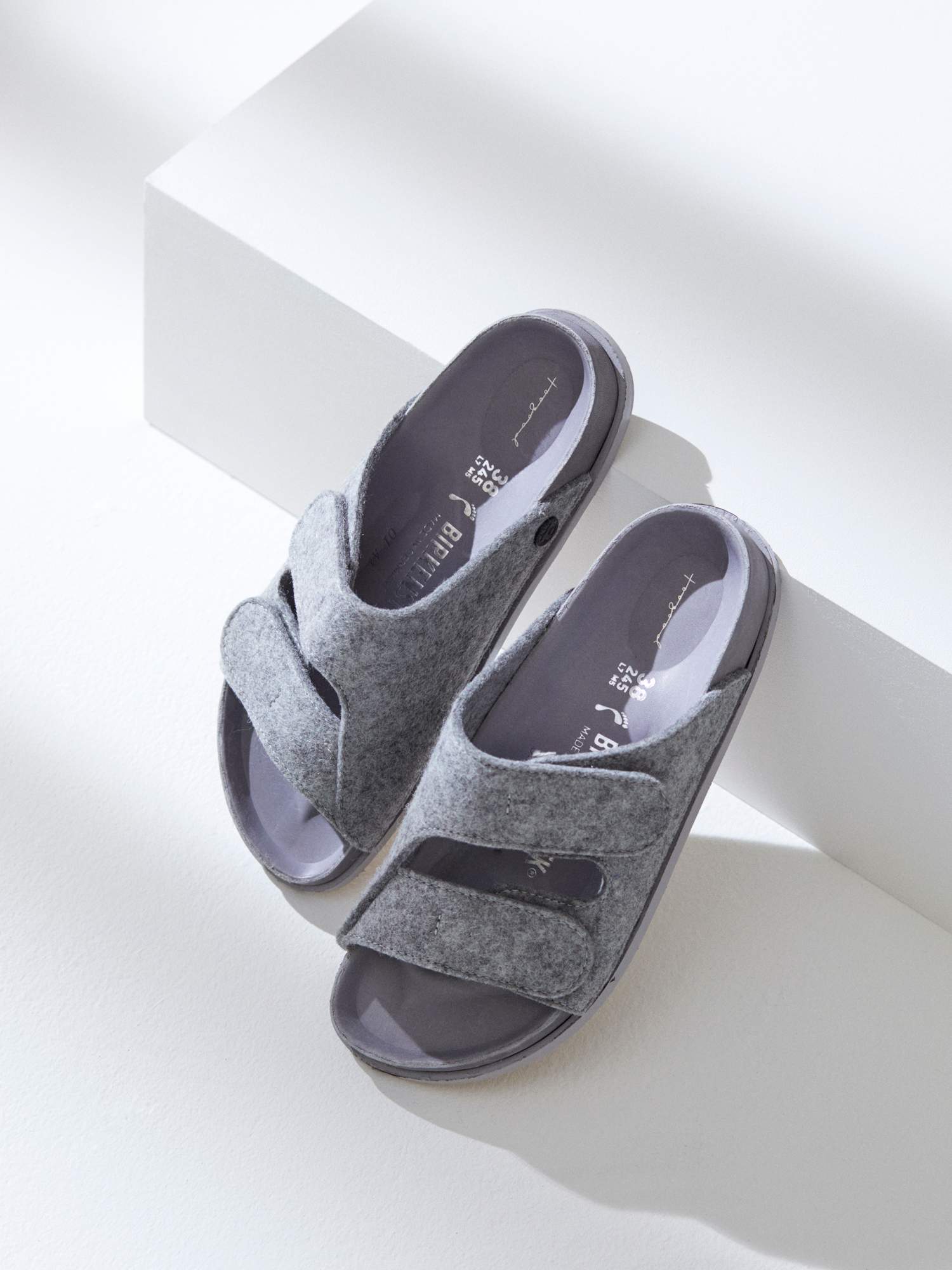
SANDALS by Birkenstock x Faye Toogood
4.
brand
This Is Us
Lagos
“Locally manufactured” is a term frequently bandied about in the fashion industry but Nigerian label This Is Us takes the concept as far as it can go. The brand’s boxy indigo-dyed uniformwear isn’t just “100 per cent Nigerian end to end”, as husband-and-wife owners Oroma Cookey-Gam and Osione Itegboje say. The cotton is grown, woven, dyed and sewn into clothing in the region around Katsina State. “I used to have another line,” says Cookey-Gam. “I stopped because I was using a lot of imported fabric and I couldn’t find myself in the stuff I was creating.” So she and Itegboje took a cross-country road trip to find materials, ending up at the cotton farms of Funtua, in the north. “In the process, we realised how much exists in our textile industry that’s under the radar,” says Cookey-Gam. They felt so strongly about spreading the news that their first T-shirt was printed with the words: “This is Funtua, Nigerian-made cotton.”
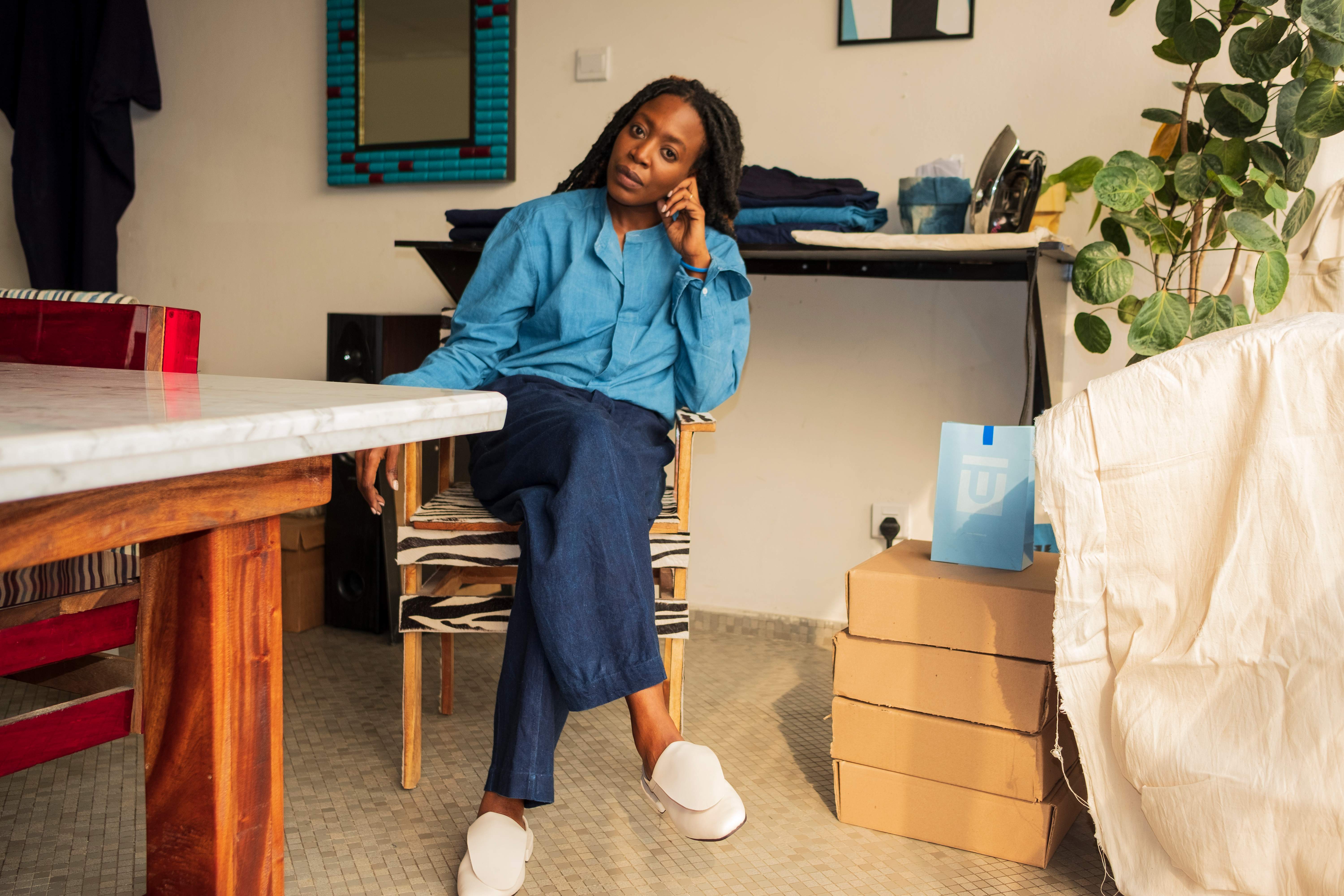
The pair are part of a vibrant creative scene in Lagos and, since their label began, they’ve connected young makers with the farmers and manufacturers that they work with in Katsina. One business that has benefited is the Kofar Mata dye pits: when the duo found them, “there was only one operating pit and the rest had trash in them,” says Cookey-Gam. This Is Us began dyeing its clothes there in a process that hasn’t changed in 500 years. Now, partly because “people have reached out to us, asking how to start dyeing there”, the facility is undergoing a resurgence. “We have an interest in more than fashion,” says Cookey-Gam. “We want to be in the middle of the talent, the resources, the craftsmanship. We want to create something useful for the industry.” For the pair, “Us” includes people far beyond their design studio.
thisisus.ng
5.
retailer
Loro Piana
New York
It’s impossible to walk around Manhattan right now without noticing the increase in vacant shops. But for businesses with deep pockets and a long-term interest in physical retail, the upended property market presents opportunities. For Italian cashmere label Loro Piana, that means a second New York shop, this time located in the Meatpacking District, where it will attract younger customers than the brand’s Madison Avenue flagship.
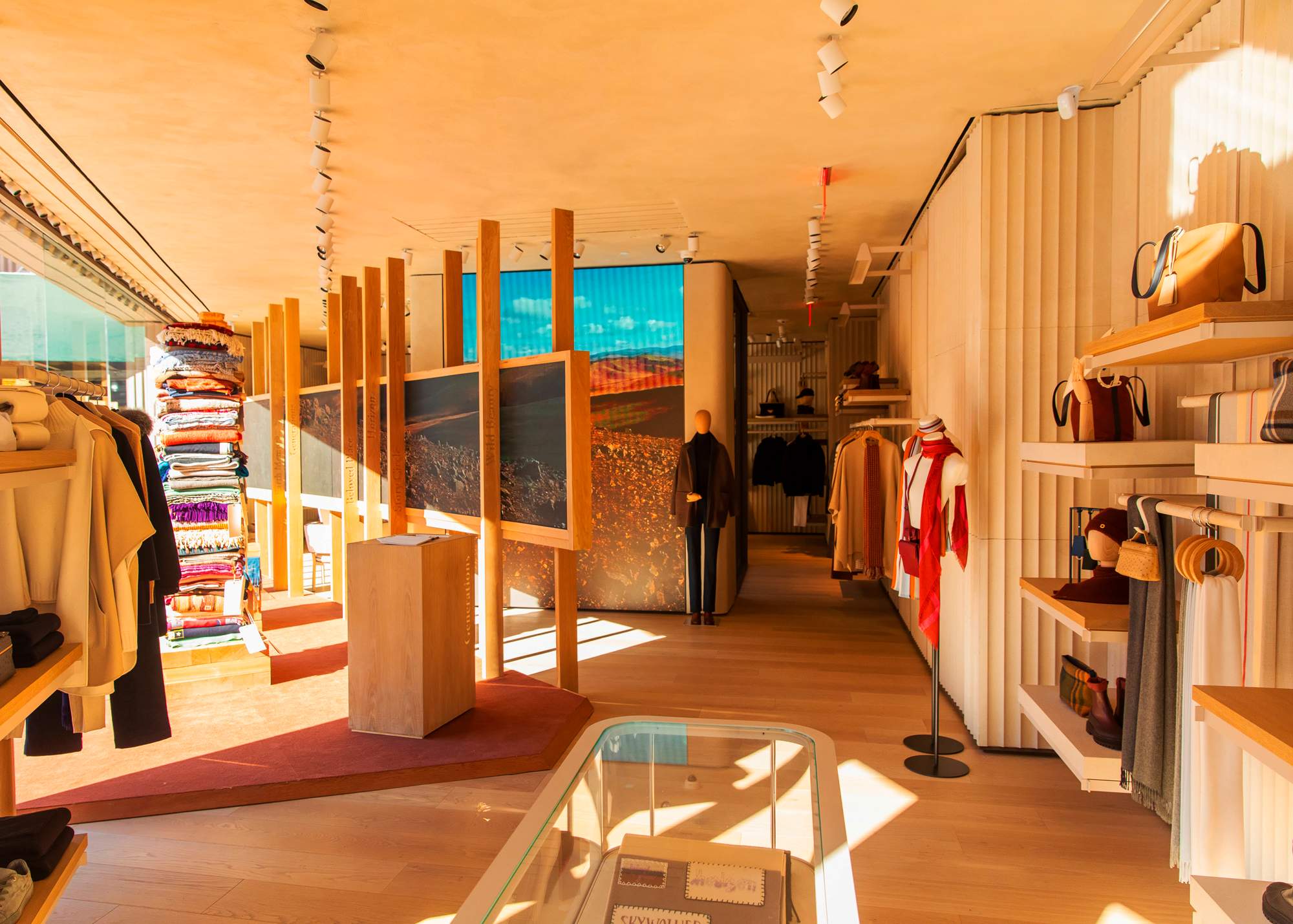
Inside the new Vincent Van Duysen-designed shop in New York
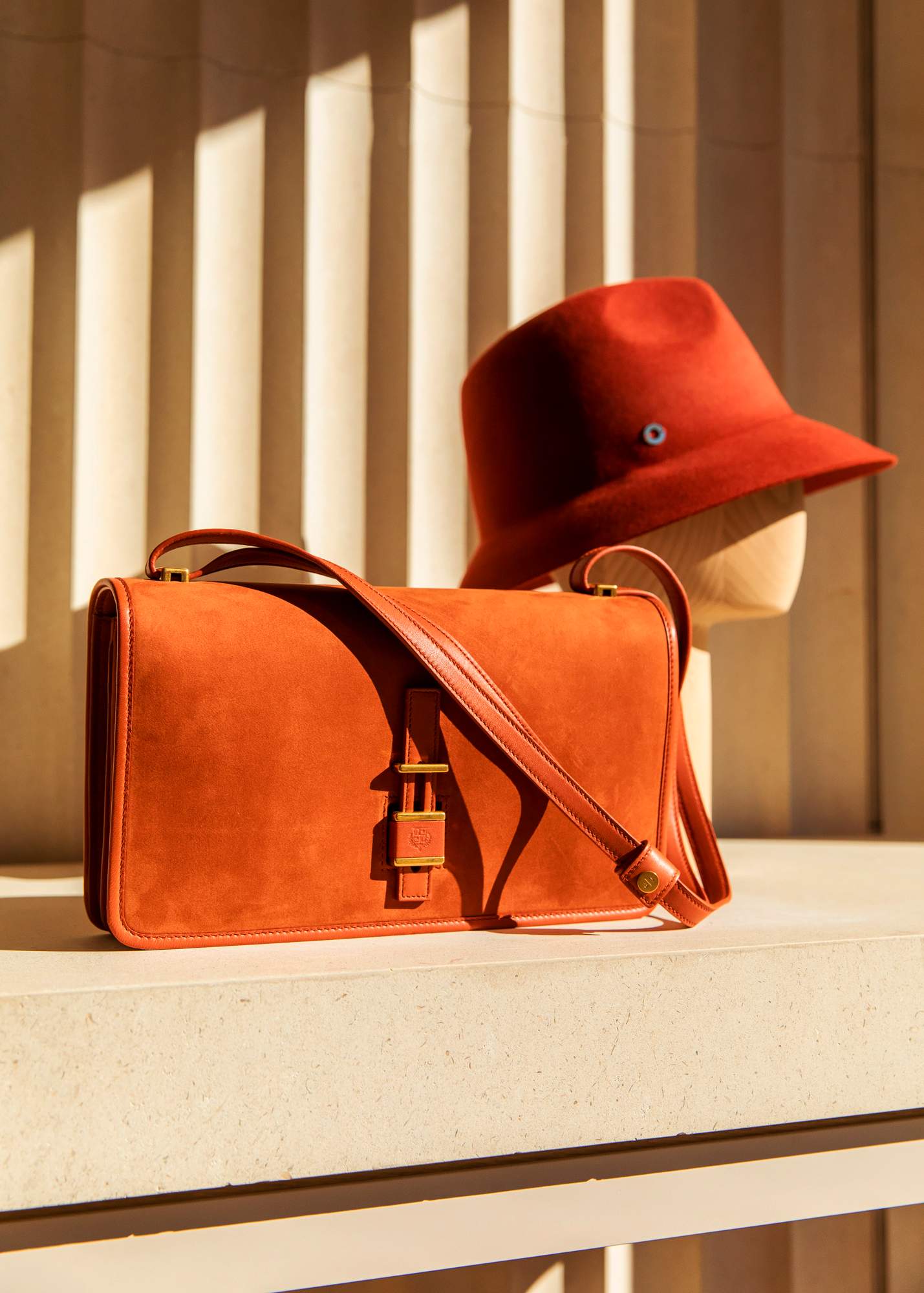
The new shop, designed by Belgian architect Vincent Van Duysen, sits on a prime corner site. The interior is all about textures, which makes sense for a company whose fabric of choice is valued for the way it feels. The Portland-stone walls contrast with the super- soft scarves and sweaters displayed in front of them, and the European oak finishes nod to Loro Piana’s outdoor roots. So does the glass-enclosed garden – a life-size terrarium, complete with a tree – that dominates the centre of the shop. Its contents will be updated four times a year, in line with the seasons.
The other regular change (apart from new collections) will be a series of art installations. These began with blanket sculptures by the artist Marie Watt that draw parallels between Loro Piana’s origins and Native American crafts. Now that so many of us have spent months shopping exclusively online, it makes sense for savvy retailers to create reasons to visit them that go beyond mere commerce.
loropiana.com
6.
retailer
Deru
Munich
Among the trendy bars and independent boutiques of Munich’s well-heeled Glockenbach district, you’ll find Deru. It opened its doors in 2019, with the aim of bringing top outdoor brands from Japan, such as And Wander, Goldwin and Snow Peak, to a German clientele. Deru comes from the Japanese term “to go out,” says co-founder Jonathan White – and his customers care about how they look both on the streets of the city and up in the Bavarian Alps.
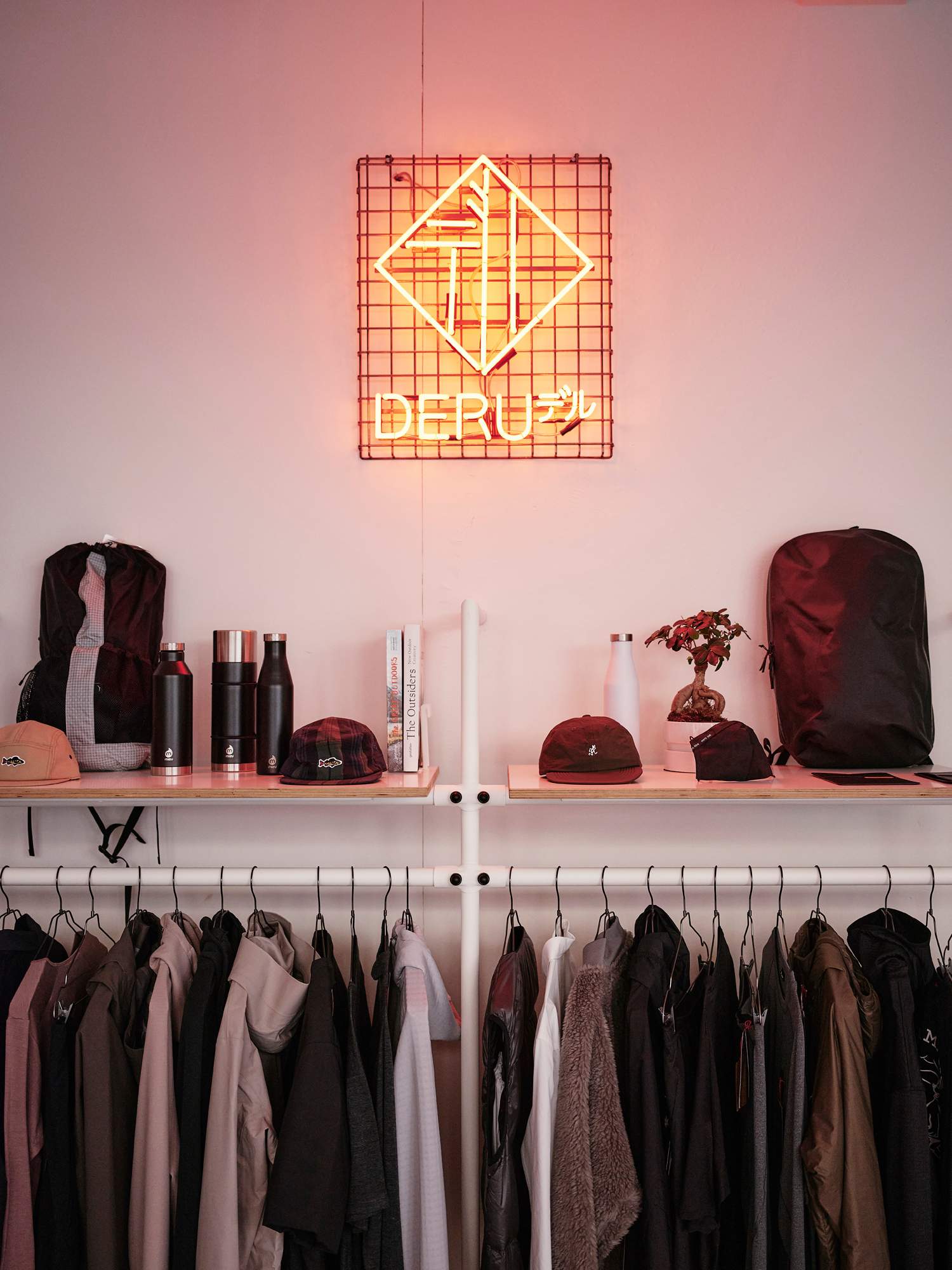
Deru founders Kerstin Gröber and Jonathan White
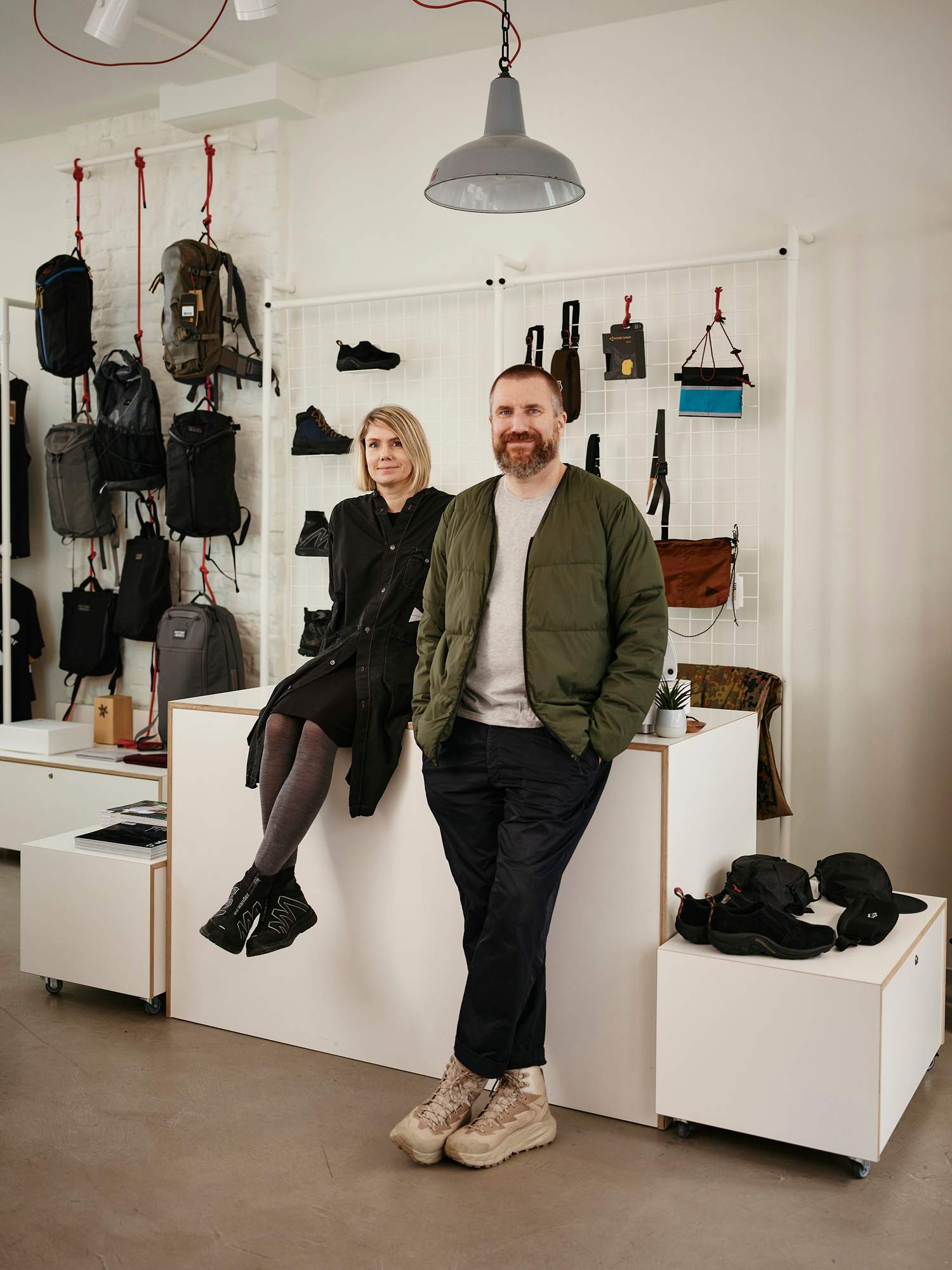
“We want to encourage people to spend time outside,” he says. “But outdoor gear is too often focused on performance. We wanted to offer both performance and style.” Since the shop opened, European labels, including Sweden’s Houdini, have joined the Japanese range, in line with the global boom in popularity of well-designed outdoor wear, particularly for men.
The selection at Deru is small and tight: White’s mission is to involve curious customers in buying decisions and form a real community around the brand. “I want Deru to feel like the skate and surf shops that I used to go to when I was young,” he says. “These were places of community and the exchanging of ideas. Deru is becoming a destination not only to buy stuff but also for good people to hang out and have a nice conversation.”
deru-store.com
7.
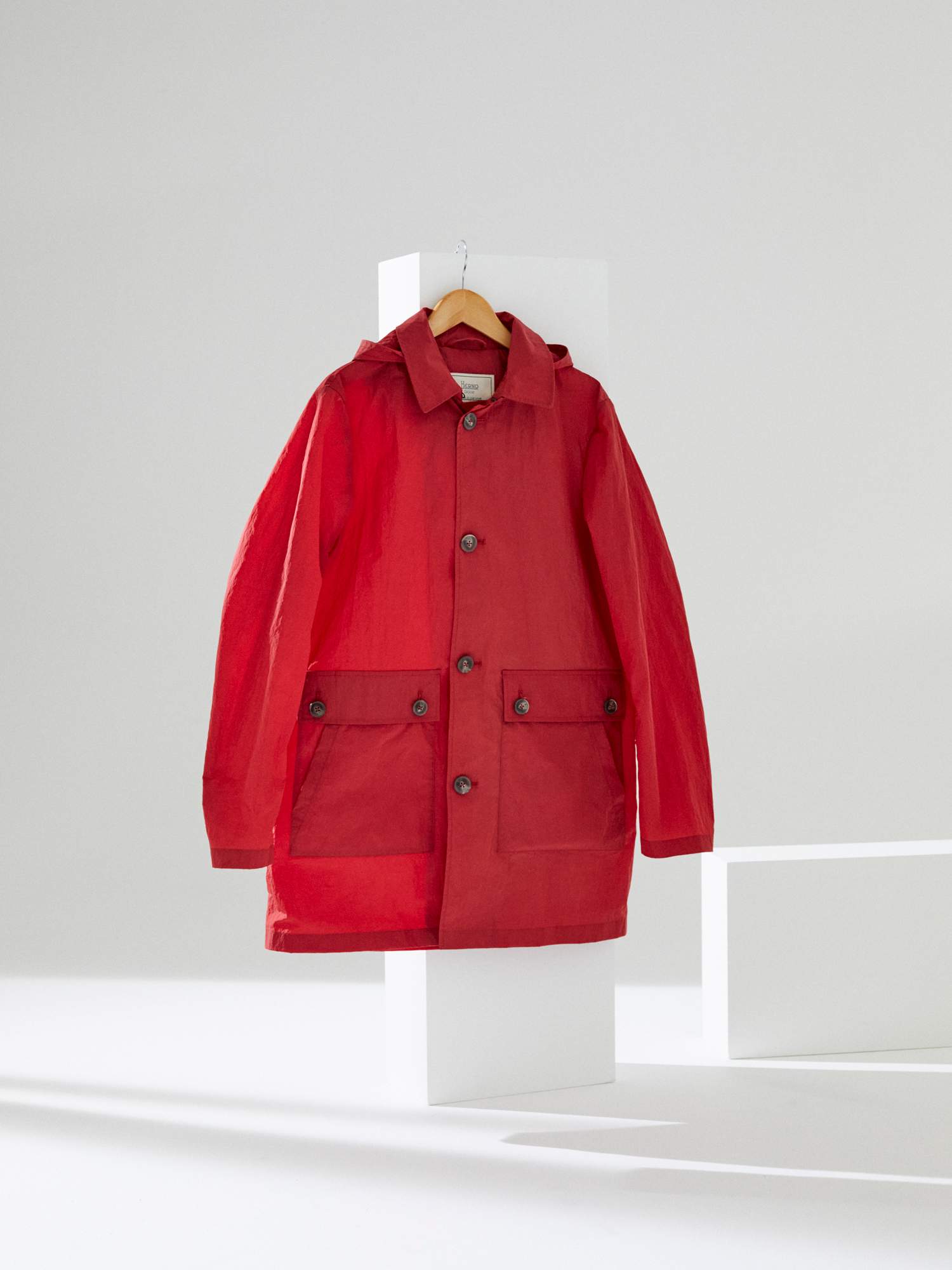
JACKET by Herno Globe
8.
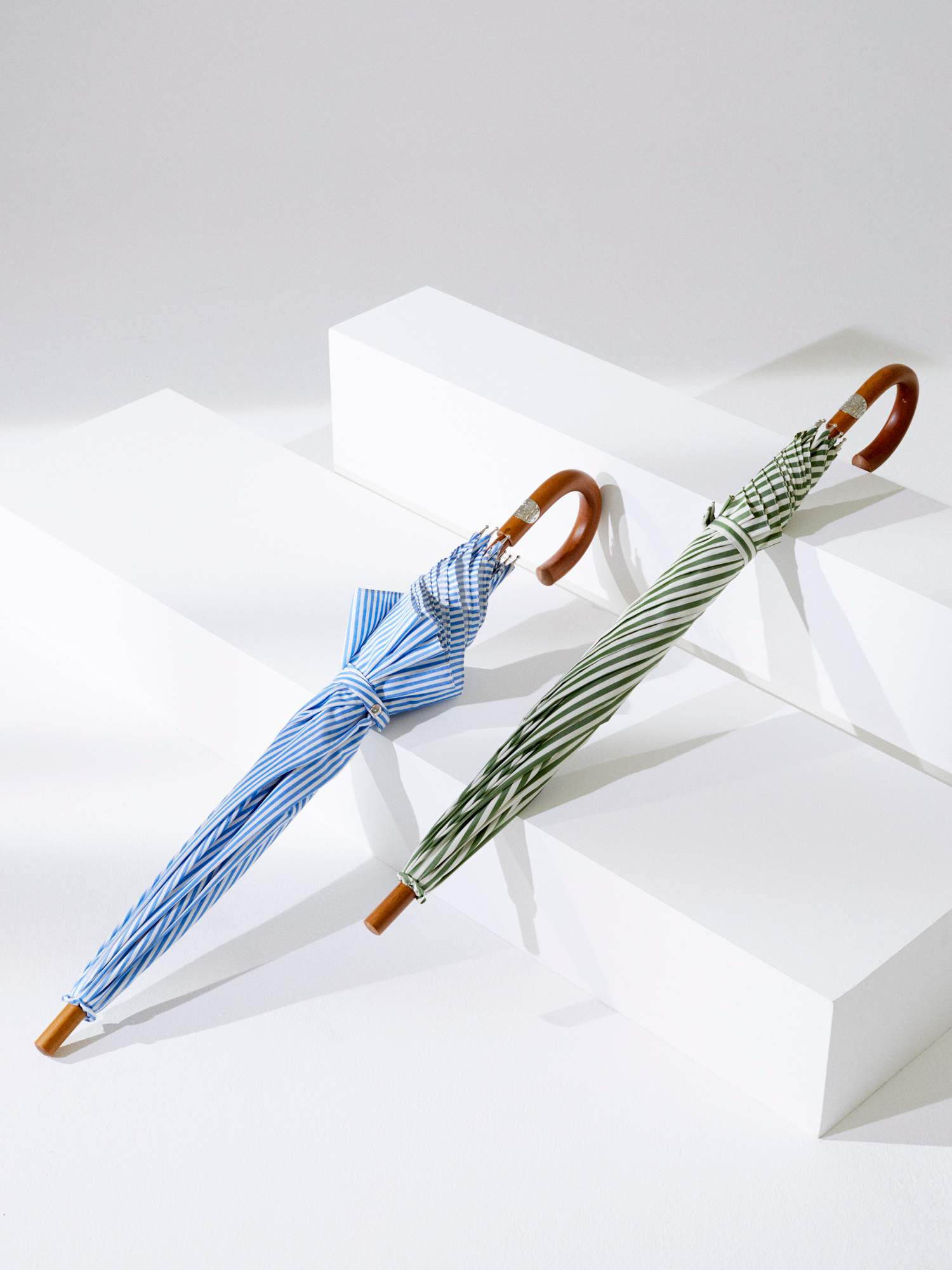
UMBRELLAS by Francesco Maglia
9.
brand
Marimekko
Helsinki
Marimekko is unmissable in Helsinki. Not only is the Finnish capital home to the brand’s HQ and textile printing press but its distinctive graphics are all around. There are half a dozen retail outposts in the city centre alone, and residents carry the brand’s signature typography-heavy tote with pride.
Marimekko has occupied this central role ever since its foundation by Armi Ratia in 1951, but that did not automatically translate into good business. “At the end of the 1980s, we were nearly bankrupt when Marimekko had been sold to a conglomerate that didn’t know how to lead a creative firm,” says ceo Tiina Alahuhta-Kasko. But, as the company turns 70, it’s on a stronger footing than ever. The clothing, homewares and textiles brand is expanding both at home and abroad – it even increased its profits last year, despite the retail disruptions.
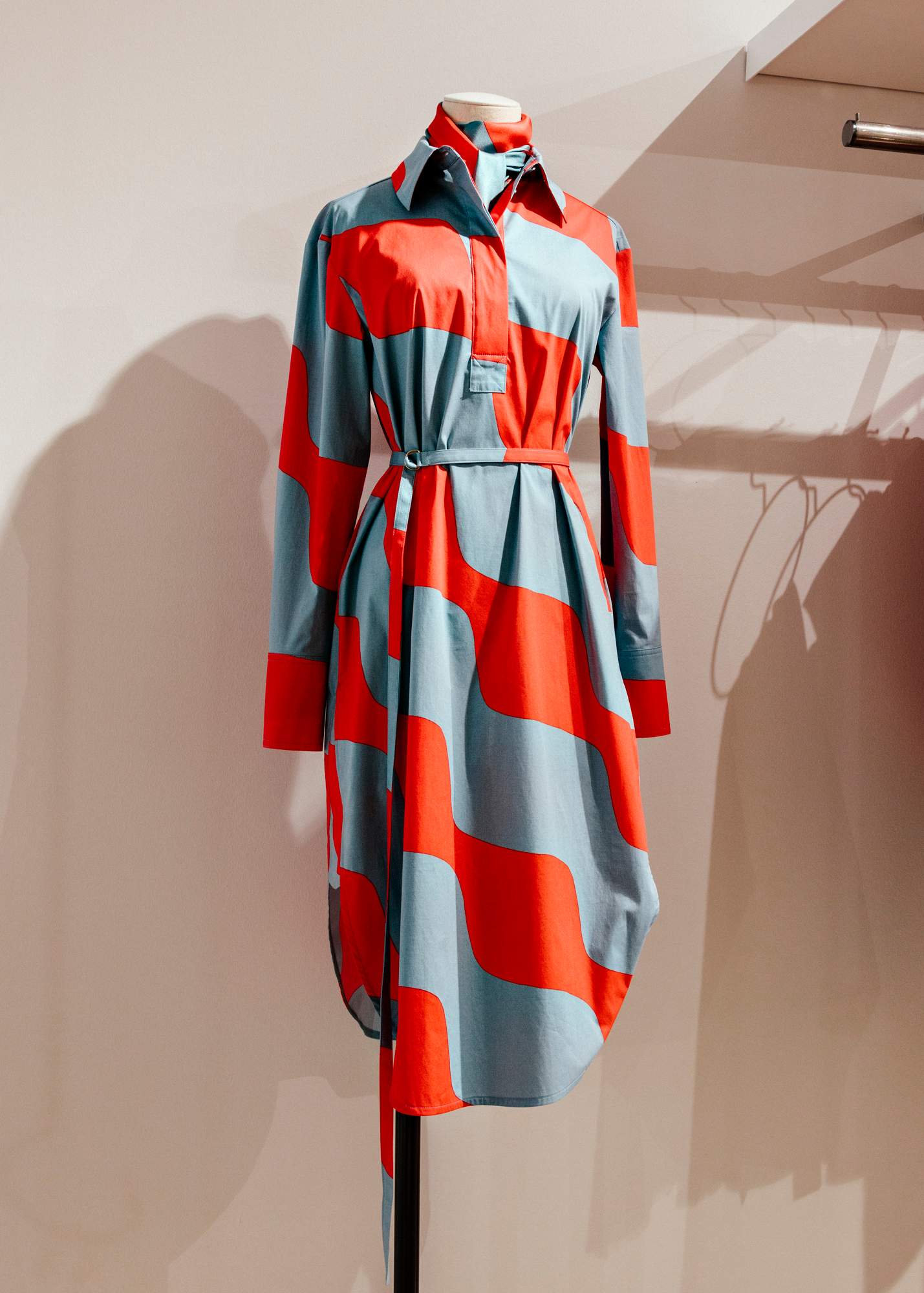
Marimekko’s Kuuluminen dress in Taifuuni
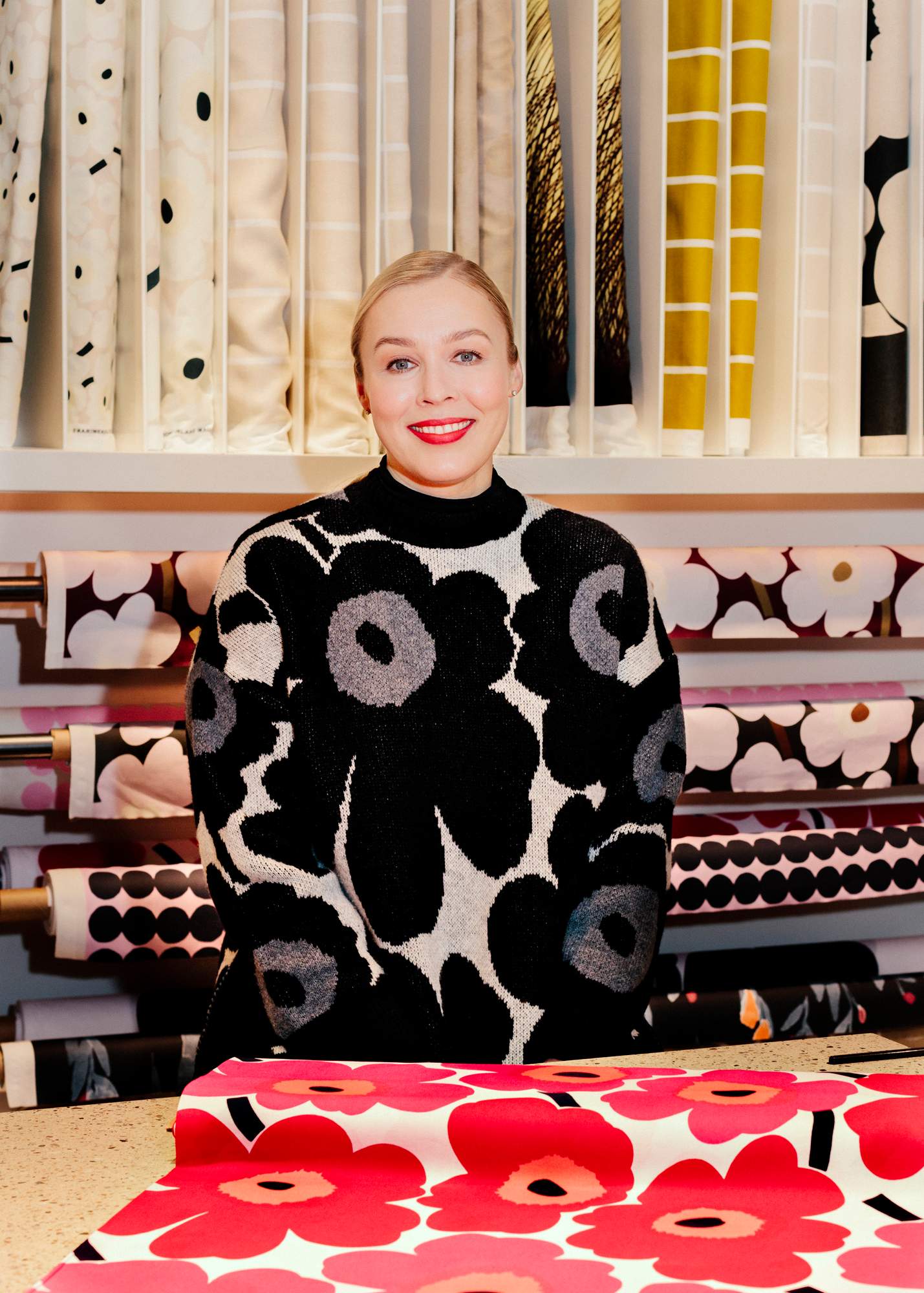
Today the unisex approach that Marimekko pioneered in the 1950s is clearly resonating with the next generation. “I cannot think of a brand that’s more democratic than Marimekko,” says Danish industry veteran Rebekka Bay, who was appointed creative director last year. “A lot of our inherent values are really relevant now.”
While its classic prints are a lasting success, Marimekko knows not to rest on its laurels. The firm champions design talent by commissioning several fabric patterns every year. “We are hoping to create the future icons for Marimekko,” says Bay. “Our legacy is so strong that you can afford to challenge, even mishandle it a bit.”

The shop in Esplanadi, Helsinki